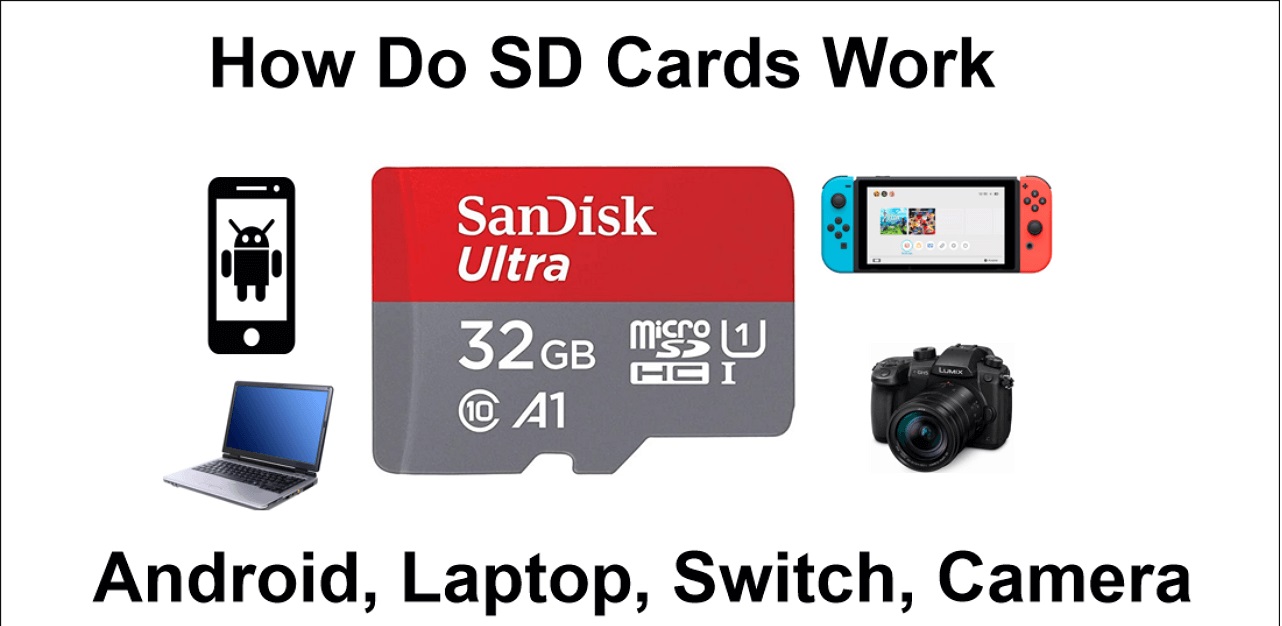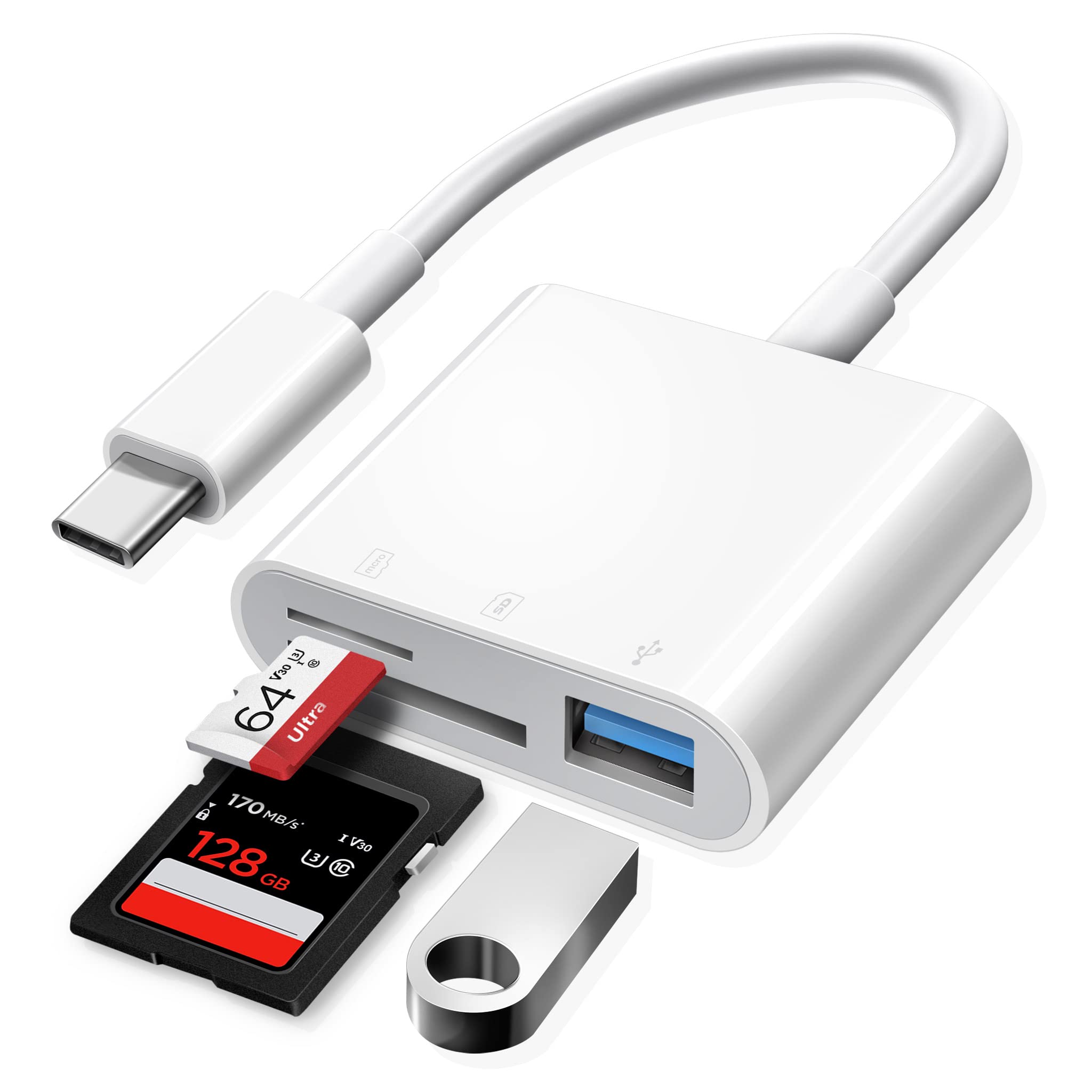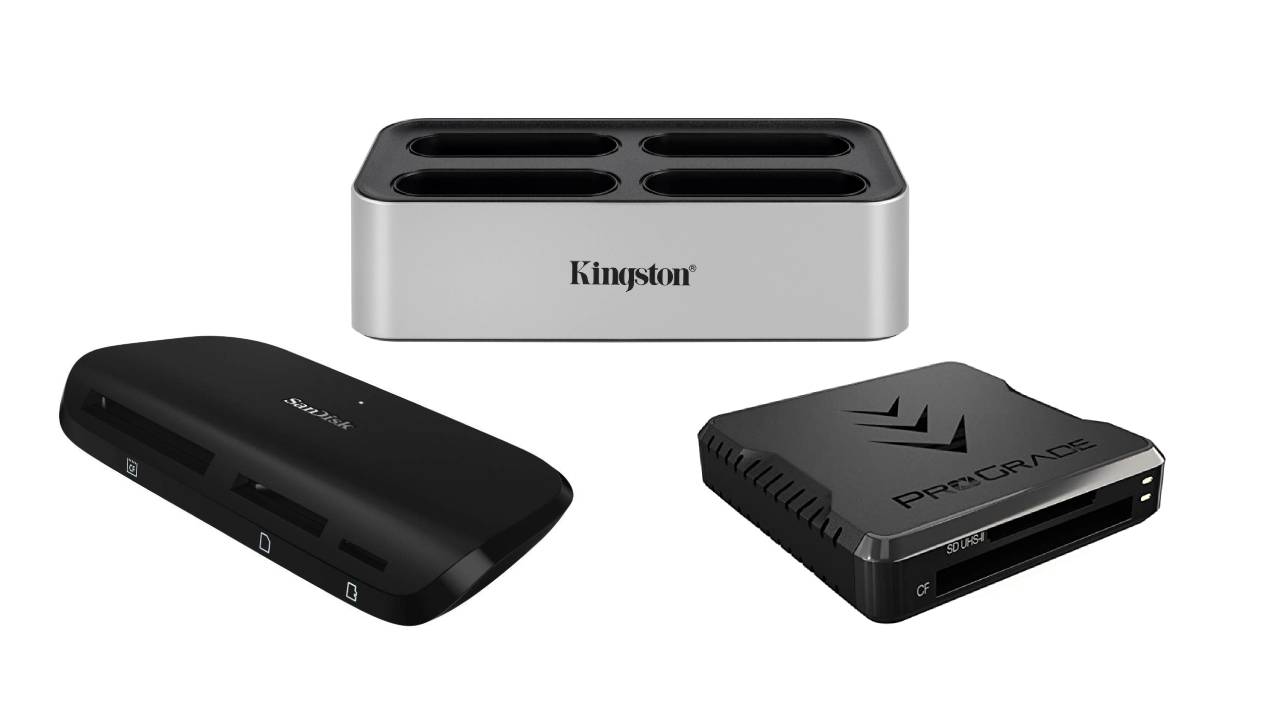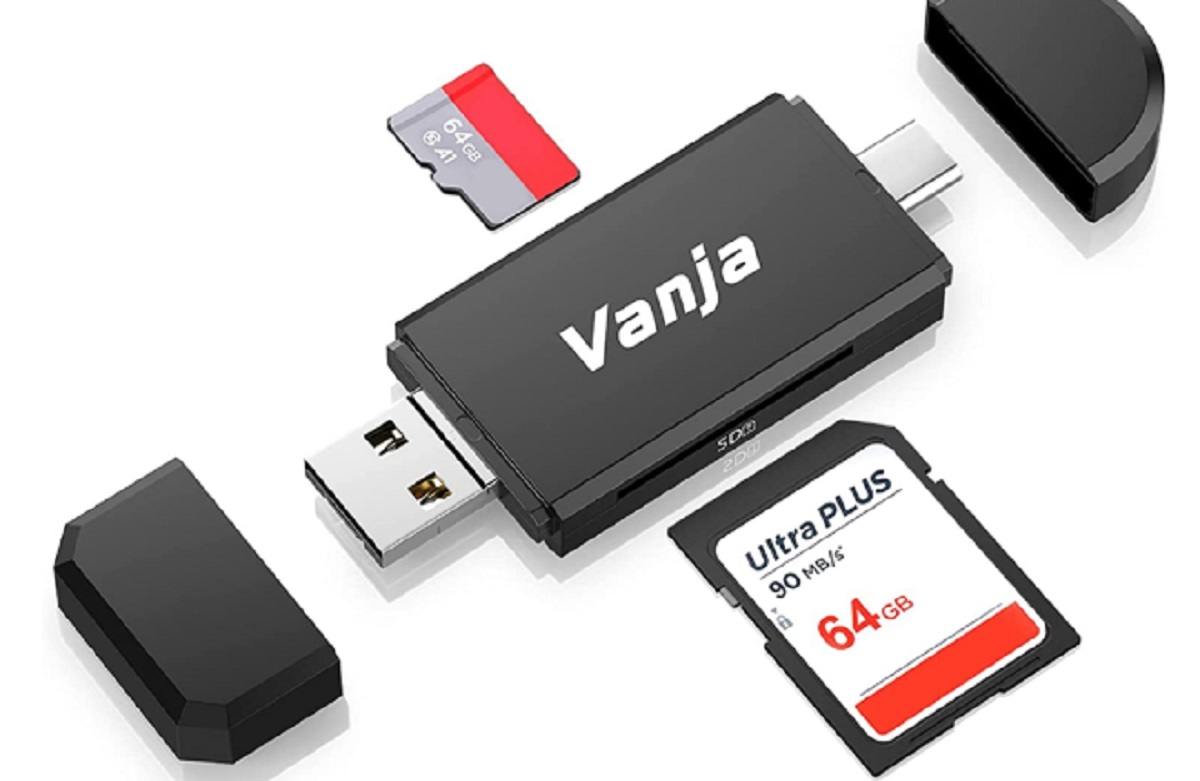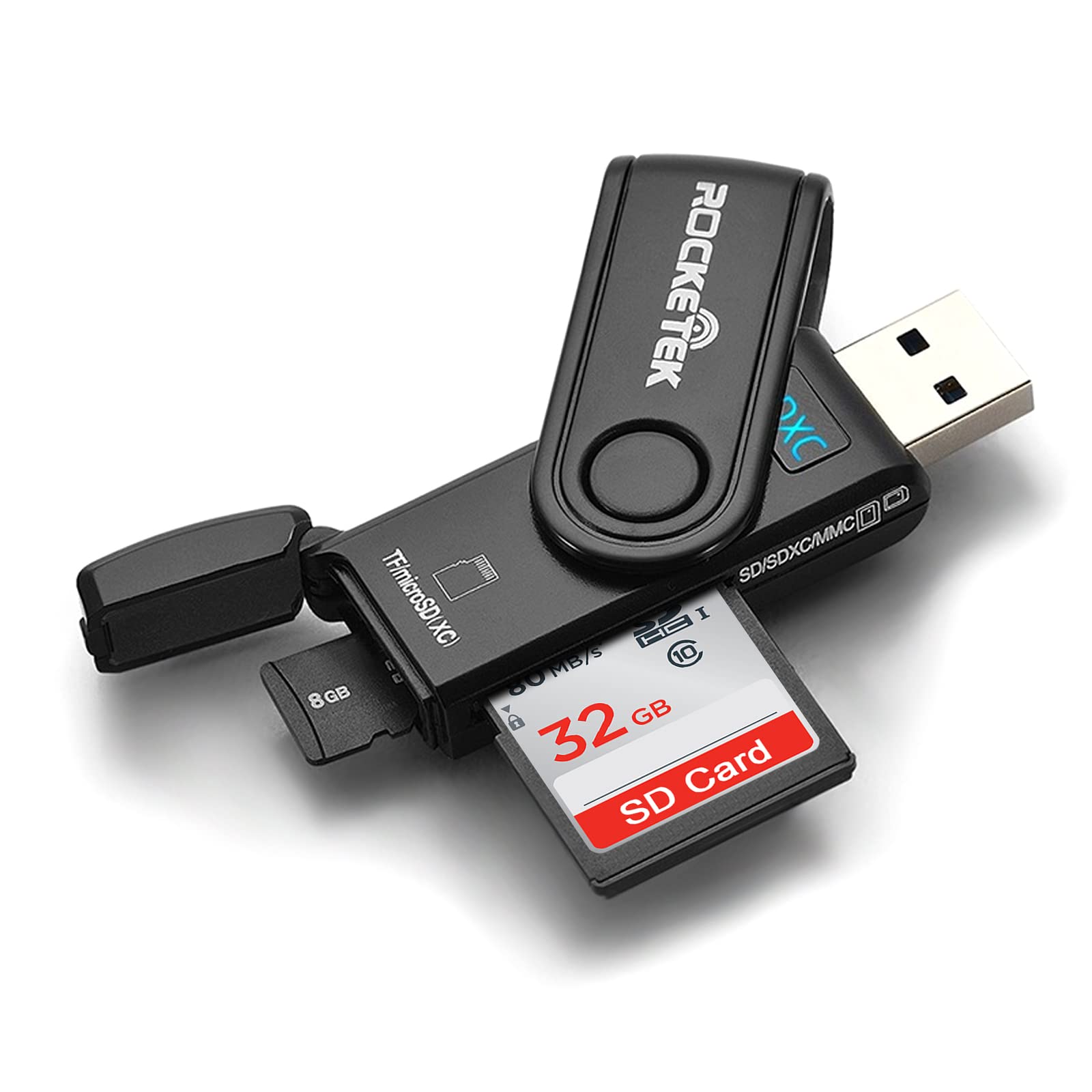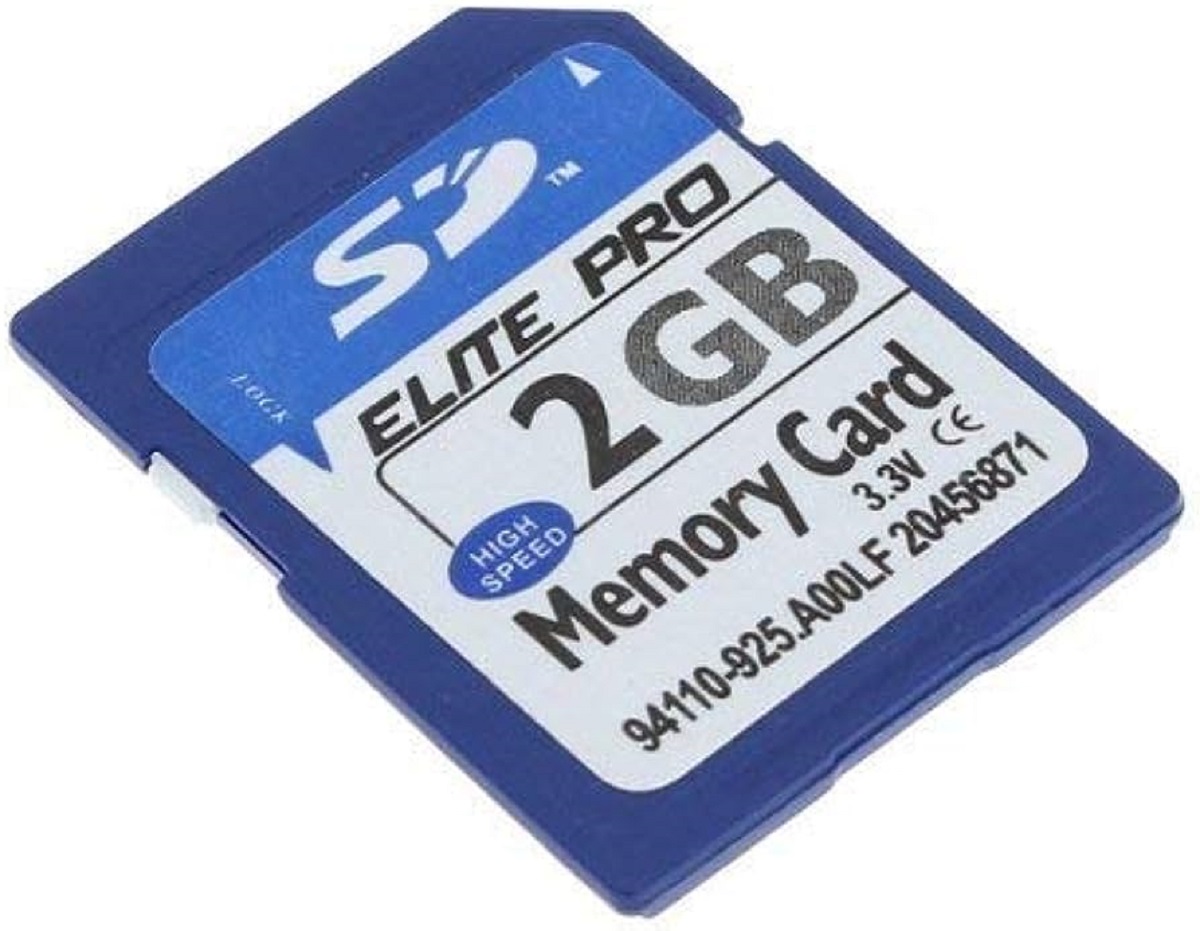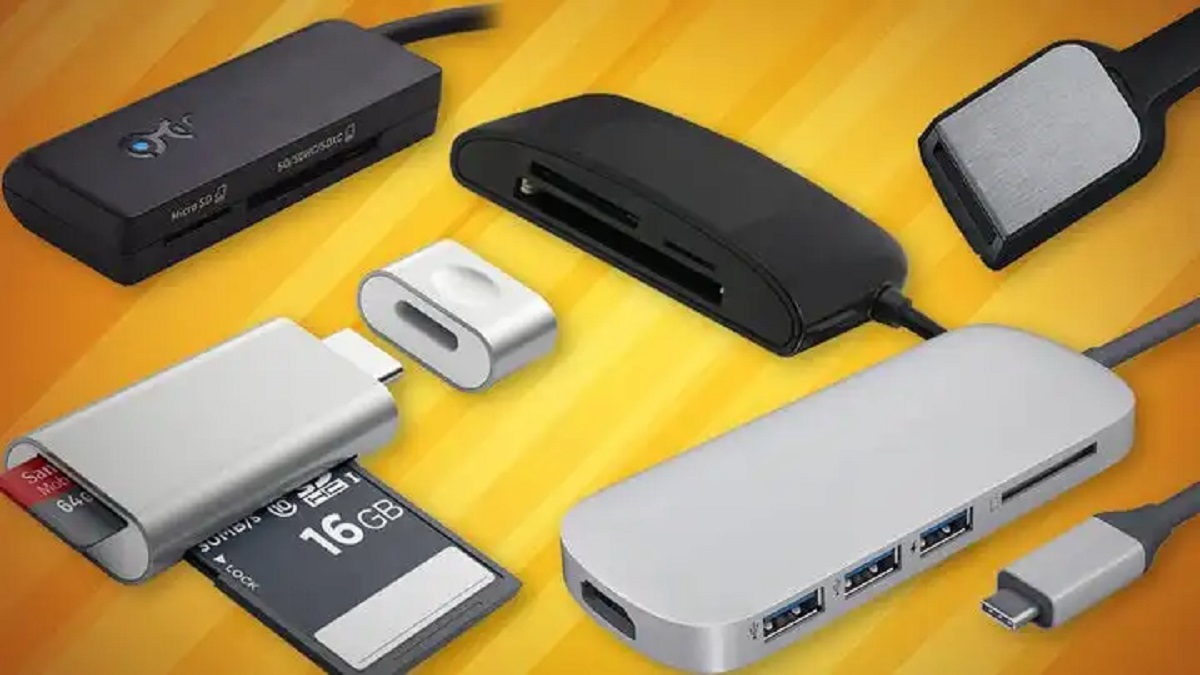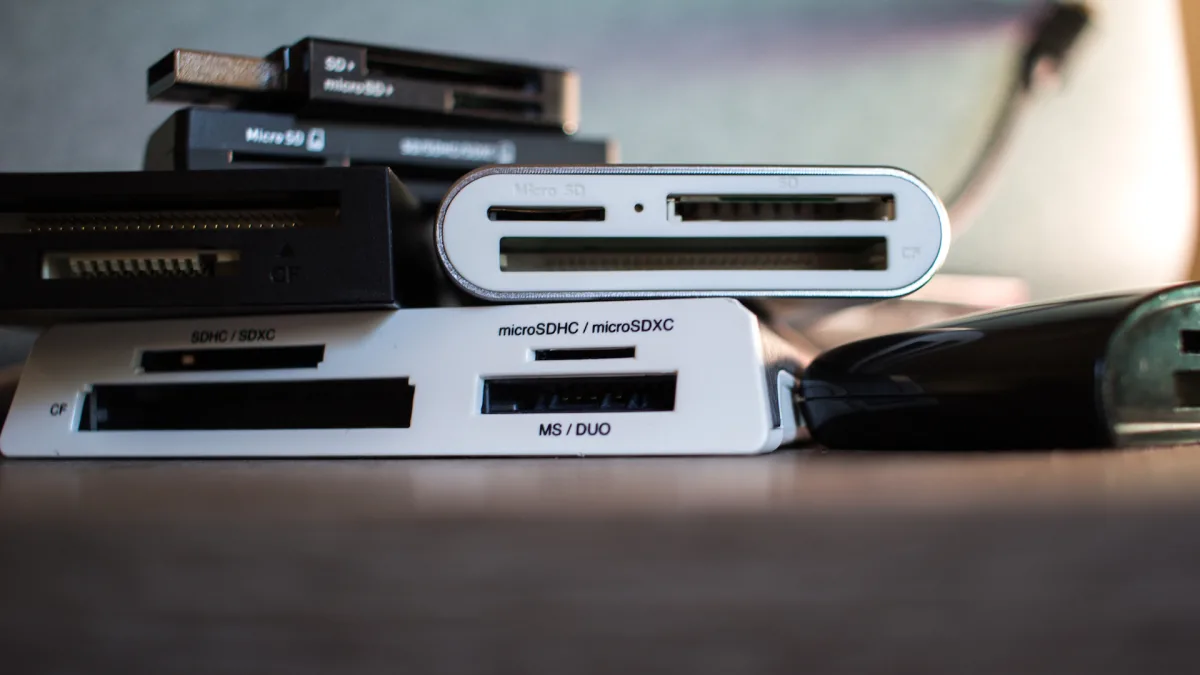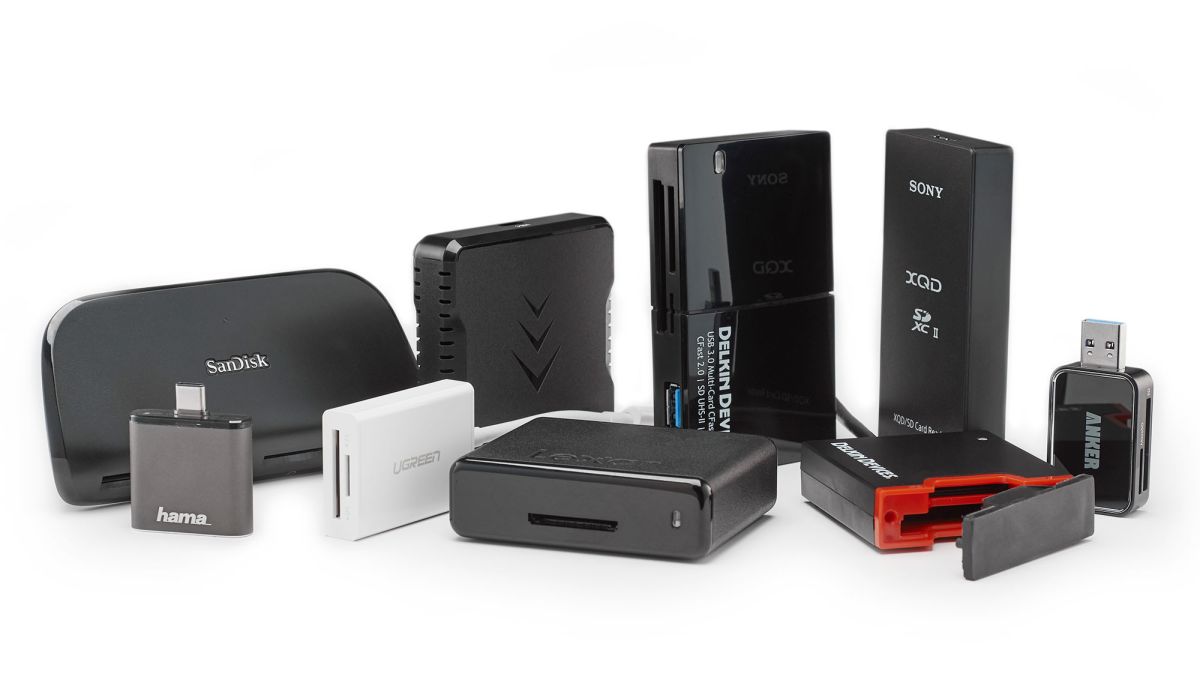Why Do We Need SD Cards?
SD cards, short for Secure Digital cards, have become an integral part of our lives in the digital age. These small, portable storage devices have gained immense popularity due to their versatility and capacity to store large amounts of data. But why do we need SD cards when we have other alternatives like cloud storage or internal device memory?
The primary reason for the need of SD cards is their convenience and portability. Unlike cloud storage, which requires an internet connection to access files, SD cards can be easily carried and used on the go. Whether you’re a student needing to transfer important documents between class or a photographer capturing stunning images in remote locations, SD cards provide a reliable way to store and transport your data.
SD cards are also widely used in devices that have limited internal storage, such as smartphones, digital cameras, and gaming consoles. These devices often come with a fixed amount of built-in memory, which can quickly get filled up with apps, photos, videos, and games. SD cards offer an easy and cost-effective way to expand the storage capacity of these devices, allowing users to store more content without needing to delete or uninstall anything.
Furthermore, SD cards offer a high level of compatibility. They can be inserted into a wide range of devices that support SD card slots, including laptops, tablets, car stereos, and even some home appliances. This compatibility makes SD cards a practical choice for sharing files between different devices and ensuring seamless interoperability.
Another advantage of SD cards is their durability. They are built to withstand various environmental conditions, such as extreme temperatures, shock, and water damage. This makes them suitable for use in rugged environments or outdoor activities, where the safety of data is crucial.
Lastly, SD cards provide a reliable backup solution. By storing your important files and data on an SD card, you have an additional copy of your information that can be easily accessed and retrieved in case of device failure, data corruption, or accidental deletion.
In summary, SD cards fulfill a vital role in today’s digital world. Their portability, expandability, compatibility, durability, and backup capabilities make them an indispensable storage solution. Whether you’re a professional photographer, a tech-savvy student, or an avid gamer, SD cards play a significant role in meeting your storage needs and ensuring the safety of your valuable data.
What Is an SD Card?
An SD card, also known as a Secure Digital card, is a small, portable storage device used to store and transfer digital data. It is a non-volatile memory card format designed to be used in a wide range of electronic devices.
The SD card was introduced in the late 1990s as a collaboration between three companies: Panasonic, SanDisk, and Toshiba. It quickly gained popularity and became the universal standard for portable storage due to its compact size, ease of use, and high capacity.
Physically, an SD card is a small rectangular card, measuring 32mm by 24mm by 2.1mm. It is made up of a plastic casing that houses the internal components, including the memory chip, controller, and contact pins. The contact pins are used to connect the SD card to compatible devices, such as digital cameras, smartphones, tablets, and laptops.
SD cards come in various storage capacities, ranging from a few megabytes (MB) to several terabytes (TB). The storage capacity of an SD card determines how much data it can hold, including photos, videos, music, documents, and other files.
SD cards offer different speed classes, such as Class 2, Class 4, Class 6, and Class 10. These speed classes indicate the minimum sustained write speed of the SD card, which is important for tasks like capturing high-definition videos or transferring large files quickly. Higher speed class ratings indicate faster data transfer rates.
In addition to the standard SD card format, there are also smaller variants available, such as microSD and miniSD cards. MicroSD cards are commonly used in smartphones, tablets, and action cameras, while miniSD cards are less common and mostly used in older devices.
Security features are another important aspect of SD cards. Many modern SD cards include built-in security mechanisms, such as write protection switches and encryption capabilities. These features help protect data from being accidentally overwritten or accessed by unauthorized individuals.
In summary, an SD card is a compact, portable storage device that allows users to store and transfer digital data. With different storage capacities, speed classes, and security features, SD cards provide a versatile and reliable storage solution for various electronic devices.
How Does an SD Card Store Data?
SD cards store data using a combination of semiconductor memory technology, similar to what is found in USB flash drives and solid-state drives (SSDs). The primary component responsible for storing data in an SD card is the memory chip, which is made up of multiple memory cells.
The most common type of memory technology used in SD cards is called NAND flash memory. NAND flash memory is a non-volatile type of memory, meaning it retains data even when the power is turned off. It is known for its high density, fast read and write speeds, and low power consumption.
Inside an SD card, the memory chip contains a grid-like array of memory cells, organized into pages and blocks. Each memory cell can store multiple bits of data, typically 1 or 2 bits per cell, depending on the type of NAND flash memory used.
When data is written to an SD card, the memory controller divides it into small chunks called sectors. These sectors are then distributed across the memory cells, and the memory controller records the logical address of each sector for retrieval purposes.
Reading data from an SD card involves the reverse process. The memory controller determines the logical address of the requested data, locates the corresponding sectors in the memory cells, and retrieves the stored information for transmission to the device accessing the SD card.
One important aspect of SD card storage is wear leveling. Wear leveling is a technique used to distribute data evenly across the memory cells to prevent certain areas from being used excessively. By evenly distributing data, wear leveling helps prolong the lifespan of the SD card and maintain optimal performance.
It is worth noting that SD cards are not immune to data corruption or loss. Electrical interference, physical damage, or improper handling can lead to data corruption or even complete data loss. Therefore, it is crucial to regularly back up important data from an SD card to ensure its safety.
In summary, an SD card stores data using NAND flash memory technology. By dividing data into sectors and distributing them across memory cells, an SD card provides a reliable and portable storage solution for various digital devices.
Types of SD Cards
SD cards come in various types and formats to cater to different device requirements and user needs. Understanding the different types of SD cards can help you choose the right one for your device and ensure compatibility.
1. SDSC (Standard Capacity): SDSC cards, also known as SD cards, are the original and most common type of SD card. They have a storage capacity ranging from a few megabytes (MB) to 2 gigabytes (GB). SDSC cards are suitable for basic storage needs and are compatible with most devices that have an SD card slot.
2. SDHC (High Capacity): SDHC cards, or Secure Digital High Capacity cards, were introduced as an extension of the SDSC format to meet the growing demand for larger storage capacities. They have a capacity range between 2 GB and 32 GB. SDHC cards use a different file system than SDSC cards, known as FAT32, to support their larger storage size.
3. SDXC (eXtended Capacity): SDXC cards, or Secure Digital eXtended Capacity cards, offer even higher storage capacities than SDHC cards. They have a capacity range starting from 32 GB and can go up to a massive 2 terabytes (TB). SDXC cards use the exFAT file system, which allows for larger file sizes and improved performance.
4. microSD and microSDHC: MicroSD and microSDHC cards are smaller variants of the traditional SD cards, designed for use in smartphones, tablets, action cameras, and other portable devices. They offer the same storage capacity as their SD counterparts but come in a smaller form factor.
5. UHS-I (Ultra High-Speed): UHS-I SD cards are designed to provide faster data transfer speeds, making them ideal for tasks that require quick and seamless data read and write operations, such as capturing high-resolution photos or recording 4K videos. They have a higher bus speed interface compared to standard SD cards.
6. UHS-II (Ultra High-Speed II): UHS-II SD cards take the speed capabilities to the next level. They feature a faster bus speed interface and are suitable for professional photographers, videographers, and other demanding users who require lightning-fast data transfer speeds for uninterrupted shooting and recording.
It is important to note that the compatibility of SD cards can vary depending on the device. While most devices support SDXC, SDHC, and SD cards, it’s crucial to check the specifications of your device to ensure compatibility with the specific type and capacity of the SD card you intend to use.
In summary, there are several types of SD cards available, including SDSC, SDHC, SDXC, microSD, microSDHC, UHS-I, and UHS-II. Each type offers different storage capacities, speed capabilities, and form factors to cater to various device requirements and user preferences.
How Does an SD Card Interface Work?
The interface of an SD card enables communication between the card and the device it is being used in. It ensures efficient data transfer and allows the device to read and write data to the SD card. The most common interface used in SD cards is the Secure Digital Input Output (SDIO) interface.
The SDIO interface uses a standard set of commands and protocols to facilitate communication between the device and the SD card. When an SD card is inserted into a compatible device, such as a digital camera or a smartphone, the device’s host controller communicates with the SD card using a specific set of commands and data transfer modes.
When the device wants to perform a task, such as reading or writing data, it sends a command to the SD card. The SD card then interprets the command and responds accordingly. For example, if the command is to read data, the SD card retrieves the requested data from its memory and sends it back to the device.
The data transfer between the device and the SD card occurs through a serial bus interface. This interface consists of a set of electrical contacts or pins that establish a connection between the device and the SD card. The most common type of interface used in SD cards is the 9-pin interface, which includes data lines, a clock line, and a ground line.
SD cards also support a high-speed mode called the Ultra High-Speed (UHS) interface. UHS enables faster data transfer rates, making it suitable for tasks such as capturing high-resolution photos, recording high-definition videos, or transferring large files quickly. UHS-II SD cards support an additional set of pins to achieve these higher data transfer speeds.
Furthermore, SD cards can also leverage other interfaces, such as the SPI (Serial Peripheral Interface) or the 4-bit and 8-bit wide bus interfaces, for compatibility with devices that do not have dedicated SD card slots. These alternative interfaces provide flexibility in connecting SD cards to various devices.
It is crucial to ensure compatibility between the SD card and the device’s interface. Not all devices support every type of SD card interface, and using an incompatible card could result in non-functionality or reduced performance.
In summary, the interface of an SD card, typically based on the SDIO protocol, enables communication between the card and the host device. The interface facilitates the transfer of data and commands between the device and the SD card, allowing for efficient data storage and retrieval.
The File System on an SD Card
The file system used on an SD card plays a crucial role in organizing and managing the stored data. It determines how files are named, stored, accessed, and managed within the SD card’s memory. The two most common file systems used on SD cards are FAT32 and exFAT.
1. FAT32 (File Allocation Table 32): FAT32 is the most widely supported file system for SD cards. It is compatible with a wide range of devices, including digital cameras, smartphones, and gaming consoles. FAT32 has a maximum file size limit of 4 gigabytes (GB) and a maximum partition size of 2 terabytes (TB).
The FAT32 file system organizes data by using a file allocation table, which keeps track of the location of each file on the SD card. It supports long file names and allows for easy data exchange between different operating systems.
2. exFAT (Extended File Allocation Table): exFAT is a newer file system specifically designed for SDXC cards. It offers several advantages over FAT32, including support for larger file sizes and storage capacities. exFAT has a maximum file size limit of 16 exabytes (EB) and can handle partition sizes up to 128 petabytes (PB).
exFAT is particularly useful for devices that deal with large files, such as 4K videos or professional-grade photography. It provides faster read and write speeds compared to FAT32 and offers improved data integrity features.
The choice of file system depends on the device’s compatibility and specific requirements. Most devices that support SD cards are compatible with both FAT32 and exFAT. However, it is important to note that some older devices may only support the FAT32 file system.
Formatting an SD card with a file system is typically done through the device itself or via a computer using an operating system’s format utility. When formatting the SD card, it is essential to back up all data as the process will erase all existing data on the card.
In summary, the file system used on an SD card, such as FAT32 or exFAT, determines how data is organized and accessed. FAT32 is widely supported and has a maximum file size limit of 4 GB and a maximum partition size of 2 TB, while exFAT is designed for SDXC cards, supports larger file sizes, and offers faster speeds.
Reading and Writing Data on an SD Card
Reading and writing data on an SD card is a straightforward process that allows users to store, access, and manage their digital files. Devices that support SD cards, such as cameras, smartphones, and laptops, provide methods to read from and write to the SD card effortlessly.
When reading data from an SD card, the device’s file system interacts with the SD card to locate the desired files. The file system uses the logical addresses stored on the SD card to find the specific sectors where the data is stored. Once located, the device retrieves the data and makes it available for viewing or performing various actions, such as copying or editing.
Writing data to an SD card involves the reverse process. The device prepares the data to be written and specifies the location on the SD card where it should be stored. The file system updates the file allocation table or metadata on the SD card to reflect the new data. The device then transfers the data to the specified location on the SD card, updating the memory cells accordingly.
The speed at which data is read from or written to an SD card can vary depending on several factors, including the speed class of the SD card and the capabilities of the device. Higher speed class SD cards, such as UHS-I or UHS-II, offer faster data transfer rates, which is beneficial for tasks that involve large file sizes or require quick access to data, such as capturing high-resolution photos or recording high-definition videos.
It is important to note that proper handling and care should be exercised when reading from and writing to an SD card. Abruptly removing an SD card while reading or writing data can cause data corruption or even physical damage to the card. Always ensure that the device has finished reading from or writing to the SD card before safely ejecting it or removing it from the device.
Regularly backing up data stored on an SD card is also crucial. Although SD cards are designed to be durable and reliable, they are still susceptible to hardware failure, accidental deletion, or loss. Having an additional copy of important data can provide a safety net and prevent irreversible data loss.
In summary, reading and writing data on an SD card is a simple process enabled through the collaboration between the device’s file system and the SD card. Users can access their files, copy or edit them, and securely store their valuable digital data on an SD card.
SDHC and SDXC: What’s the Difference?
SDHC (Secure Digital High Capacity) and SDXC (Secure Digital eXtended Capacity) are two variations of SD (Secure Digital) cards that offer different storage capacities and capabilities. Understanding the difference between SDHC and SDXC can help users choose the right type of SD card for their specific needs.
The main difference between SDHC and SDXC lies in their storage capacities. SDHC cards have a capacity range between 2 gigabytes (GB) and 32 GB, while SDXC cards offer larger storage capacities starting from 32 GB and can go up to a massive 2 terabytes (TB).
The storage capacity of an SD card is determined by the file system it uses. SDHC cards use the FAT32 (File Allocation Table 32) file system, which limits individual file sizes to 4 GB. This file system also has a maximum partition size of 2 TB. On the other hand, SDXC cards use the exFAT (Extended File Allocation Table) file system, which supports larger individual file sizes up to 16 exabytes (EB) and partition sizes up to 128 petabytes (PB).
In addition to the difference in storage capacities, SDHC and SDXC cards may also have varying performance specifications. Higher capacity SDXC cards often come with faster read and write speeds than SDHC cards, making them more suitable for handling large files or data-intensive tasks like capturing high-resolution photos or recording 4K videos.
It is important to note that the compatibility of SDHC and SDXC cards can vary depending on the device. Most newer devices that support SDXC are backward compatible and can also read and write data to SDHC cards. However, some older devices may only support SDHC and SD cards, so it is essential to check the device’s specifications to ensure compatibility.
When purchasing an SD card, it is crucial to consider the storage needs and the compatibility of the device in which it will be used. SDHC cards are typically more cost-effective and suitable for basic storage requirements, while SDXC cards are ideal for users who require larger storage capacities and faster performance.
In summary, SDHC and SDXC cards differ primarily in their storage capacities and file systems used. SDHC cards offer capacities between 2 GB and 32 GB with the FAT32 file system, while SDXC cards provide larger capacities starting from 32 GB up to 2 TB with the exFAT file system. Consider the device compatibility and storage needs when choosing between SDHC and SDXC cards.
Common Uses of SD Cards
SD cards have become widely popular due to their versatility and convenience, catering to a variety of needs across different industries. Let’s explore some of the common uses of SD cards:
1. Photography: SD cards are extensively used in digital cameras to store photos and videos. With the increasing resolution and quality of images, larger capacity SD cards are preferred by professional photographers to ensure ample space for storing high-resolution images and videos during photoshoots or events.
2. Videography: SD cards are crucial for videographers, especially those working with camcorders, drones, or action cameras. The ability to capture high-definition videos requires SD cards with larger storage capacities and faster data transfer speeds to handle the data-intensive nature of video recording.
3. Gaming: Many gaming consoles, such as the Nintendo Switch, use SD cards to expand their storage capacity. Gamers can store additional games, downloadable content, and updates on the SD card, allowing them to access and play their favorite titles without worrying about limited internal storage space.
4. Mobile Devices: SD cards are commonly used in smartphones and tablets to expand their storage capacity. This is particularly useful for users who frequently take photos, download apps, or store large media files like music and videos. An SD card provides additional space for storage without the need to delete or uninstall content.
5. Automotive Entertainment Systems: Some car stereos and entertainment systems are equipped with SD card slots. Users can store their favorite music, audiobooks, or podcasts on an SD card and enjoy them during their journeys without relying on external devices or an internet connection.
6. Portable Audio Players: SD cards are compatible with many portable audio players, allowing users to carry their entire music library with them wherever they go. This convenience is particularly valued by music enthusiasts who prefer to have their curated playlists readily accessible without the need for an online streaming service.
7. Data Transfer: SD cards offer a convenient way to transfer files between devices. They can be used to transfer documents, photos, videos, and other files from one device to another without relying on internet connectivity. This is especially useful in situations where a Wi-Fi or cellular network is not available or reliable.
8. IoT Devices: With the rise of the Internet of Things (IoT), SD cards are used in various IoT devices as a means of storing data, logs, or firmware updates. IoT devices such as security cameras, smart home hubs, or industrial sensors often rely on SD cards for local storage and data management.
In summary, SD cards find diverse applications across industries and for personal use. Whether it’s in photography, videography, gaming, mobile devices, automotive entertainment, portable audio players, data transfer, or IoT devices, SD cards provide a flexible and portable storage solution for a wide range of purposes.
Troubleshooting an SD Card
While SD cards are generally reliable storage devices, they can encounter issues that may prevent proper functionality. Here are some common troubleshooting steps to resolve problems with an SD card:
1. Cleaning Contacts: The contact pins on an SD card can gather dust or dirt over time, leading to poor connectivity. Gently wipe the contacts with a clean, lint-free cloth or use compressed air to remove any debris. Ensure the card and device are powered off before doing this.
2. Reinserting the SD Card: Sometimes, the connection between the SD card and the device may become loose. Try removing the SD card, inspecting it for any visible damage or contamination, and reinserting it firmly into the card slot. Ensure it is properly aligned and inserted all the way in.
3. Checking Device Compatibility: Ensure that the device you are using supports the specific type and capacity of the SD card. Some devices may have limitations on which SD card type or size they can use. Refer to the device’s user manual or the manufacturer’s specifications for compatibility information.
4. Formatting the SD Card: If the SD card is not being recognized by the device or is experiencing errors, formatting the card can often resolve the issue. However, formatting erases all data on the SD card, so it’s crucial to back up any important files before proceeding.
5. Updating Device Firmware: Ensuring that your device’s firmware is up to date can resolve compatibility issues with certain SD cards. Check the manufacturer’s website or support forum for any available firmware updates for your device.
6. Using SD Card Repair Software: There are software tools available designed to diagnose and repair issues with SD cards. These tools can help fix file system errors, recover corrupted data, and restore the functionality of the SD card. Use reputable software from trusted sources and follow the instructions carefully.
7. Trying a Different Device: If the SD card is still not functioning properly, try inserting it into a different compatible device. If the card works in another device, the problem may be with the original device’s card slot or compatibility.
8. Replacing the SD Card: If all else fails and the SD card continues to exhibit issues or errors, it may be necessary to replace the card. Physical damage, wear and tear, or a faulty card can prevent proper operation, and a new SD card may be required.
Remember to handle SD cards with care, avoiding physical damage, extreme temperatures, and exposure to water or magnetic fields. Regularly backing up important data on a separate storage medium can prevent data loss in case of SD card failure or damage.
In summary, troubleshooting an SD card involves steps such as cleaning the contacts, reinserting the card, checking compatibility and firmware updates, formatting or using repair software, trying a different device, and considering card replacement as a last resort. Following these troubleshooting steps can help diagnose and resolve common issues with SD cards.
Storing and Protecting Your SD Card
Storing and protecting your SD card is essential to ensure its longevity and safeguard the data it contains. Here are some best practices to follow:
1. Use a Protective Case: Invest in a protective case specifically designed for SD cards. These cases are usually compact and provide a secure and organized way to store your SD cards. They also protect the cards from physical damage, moisture, and dust when not in use.
2. Avoid Extreme Temperatures: SD cards are sensitive to extreme temperatures. Avoid exposing them to excessive heat or cold, as this can potentially damage the card or cause data corruption. Store your SD cards in a cool and dry place, away from direct sunlight or extreme temperature fluctuations.
3. Keep Away from Magnetic Fields: Magnetic fields can interfere with the data stored on SD cards and lead to data corruption or loss. Avoid placing your SD card near devices or objects that generate strong magnetic fields, such as speakers, TVs, or magnets.
4. Handle with Clean Hands: When handling an SD card, make sure your hands are clean and free from dirt, oil, or moisture. Even small particles or contaminants on your fingers can damage the card’s contacts or potentially affect its performance.
5. Avoid Bending or Flexing: SD cards are delicate electronic devices, and excessive bending or flexing can damage the internal components or break the card. Handle them with care and avoid any unnecessary stress or bending that could compromise their integrity.
6. Insert and Remove Properly: When inserting or removing an SD card from a device, be gentle and ensure that you follow the proper procedures specified by the device’s manufacturer. Abruptly inserting or removing the card can damage the card or the card slot.
7. Regularly Back Up Data: To protect your valuable data, create regular backups of the files stored on your SD card. This can be done by transferring the data to a computer, an external hard drive, or using cloud storage services. Backing up your data helps ensure that you have an additional copy in case of accidental deletion, card failure, or loss.
8. Label and Organize: If you use multiple SD cards, it’s helpful to label them with their respective contents or purpose. This makes it easier to locate specific files or use the appropriate card for different devices. Keep them organized in a storage case or a dedicated container to avoid misplacing or mixing up the cards.
9. Secure Your SD Card: If your SD card contains sensitive or confidential data, consider encrypting the contents to protect them from unauthorized access. Many devices and operating systems offer encryption options to safeguard your data.
By following these practices, you can ensure the longevity and usability of your SD cards while safeguarding the valuable data stored on them.
In summary, storing and protecting your SD card involves using a protective case, avoiding extreme temperatures and magnetic fields, handling with clean hands, proper insertion and removal, regular data backups, labeling and organization, and considering security measures for sensitive data.
Final Thoughts
SD cards have revolutionized the way we store and transfer data. These small but powerful storage devices have become an integral part of our lives, whether in our smartphones, cameras, gaming consoles, or other devices. Understanding how SD cards work, their various types and capacities, and how to troubleshoot and protect them is essential for maximizing their usefulness and ensuring the safety of our valuable data.
As technology evolves, SD cards continue to advance in terms of storage capacity, speed, and compatibility. It is important to stay informed about the latest developments in SD card technology to make informed decisions when purchasing new cards or upgrading existing ones. Regularly checking for firmware updates for both devices and SD cards can also enhance performance and compatibility.
While SD cards offer significant advantages, they are not indestructible. Physical damage, mishandling, or other unforeseen circumstances can lead to data loss or card failure. Regularly backing up your data to alternative storage solutions can provide an extra layer of protection against such incidents.
As we continue to rely on SD cards for our digital storage needs, it is important to stay vigilant about their maintenance and care. Treating SD cards with the same level of attention and care as any other valuable electronic device can go a long way in preserving their lifespan and preventing data loss.
In the ever-changing landscape of technology, SD cards remain a reliable and convenient option for storing our digital memories, files, and media. By understanding how they work, making informed choices when selecting the right type and capacity for our needs, and taking necessary precautions to protect them, we can enjoy the benefits of portable and expandable storage that SD cards offer.
So, whether you’re a photographer capturing precious moments, a music lover with an expansive music collection, or a professional needing to store vast amounts of data, SD cards continue to be a reliable and efficient storage solution. Embrace the possibilities they offer and make the most out of your digital experiences.







